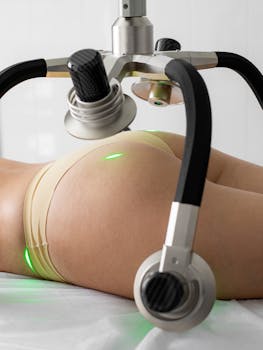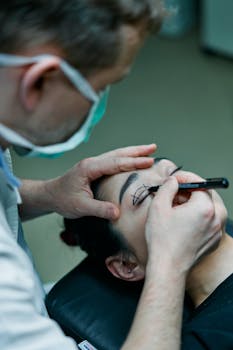Understanding butt lift recovery time is essential for planning surgery, time off work, and managing expectations. Whether you’re researching bbl recovery or considering a traditional butt augmentation, knowing typical timelines, common symptoms, and practical tips helps you feel more prepared. This guide covers what to expect in the first days and months after surgery, how long it often takes to return to daily activities, and evidence-based tips to support healing.
Butt lift recovery timeline: what to expect week by week
Immediately after surgery you’ll experience swelling, bruising, and soreness. For patients undergoing a Brazilian buttock augmentation recovery, the first 48–72 hours are often the most uncomfortable. Your surgeon will provide pain medication and instructions about positioning — for example, avoiding direct pressure on the buttocks if fat grafting was performed.
Days 1–7: acute recovery
Expect limited mobility and the need for assistance with daily tasks. For bbl recovery, wearing a compression garment is common to manage swelling and support tissues. Follow wound care directions closely to reduce the risk of infection. Sleep positioning and avoiding sitting directly on your buttocks are typical immediate precautions.
Weeks 2–6: gradual return to activity
Swelling and bruising generally decrease during weeks two to six. Light walking is encouraged early to promote circulation, but strenuous exercise and heavy lifting should be avoided. Many people ask “how long does it take to recover from brazilian buttlift” — while full resolution of swelling can take months, many return to light work within two to four weeks depending on the nature of their job. Specific phrases like bbl recovery time back to work vary by procedure and job demands.
Months 2–6: remodeling and final results
By two to three months, most patients notice significant improvement and feel more comfortable sitting for longer periods. Final contour and fullness may continue to refine up to six months or longer, especially after fat grafting. Discuss expectations for butt surgery recovery with your surgeon; some changes can continue for a year as tissues settle.
Key factors that influence healing
Individual recovery varies with age, overall health, whether implants or fat transfer were used, and adherence to postoperative instructions. Smoking, poor nutrition, and uncontrolled medical conditions can slow healing. For those curious about the broader medical context of these procedures, reputable resources like the Wikipedia overview of the Brazilian butt lift offer background on techniques and risks: Brazilian butt lift (overview).
Practical tips to support faster, safer recovery
Follow these proven strategies to help the healing process and minimize complications:
- Adhere strictly to your surgeon’s instructions for wound care and garment use.
- Stay hydrated, eat protein-rich meals, and prioritize micronutrients that support tissue repair.
- Avoid smoking and limit alcohol — both can delay healing and increase infection risk.
- Plan for help at home during the first week and arrange a gradual return to work based on your bbl recovery and job demands.
- Attend all follow-up visits so your surgeon can monitor progress and address concerns early in the brazilian buttock augmentation recovery process.
If you want to learn more about complementary self-care and skin recovery after procedures, read this related piece on advances in skincare: How new skincare technology supports recovery.
When to call your surgeon
Contact your surgical team if you experience increasing pain despite medications, fever, worsening redness or drainage, sudden asymmetry, or any other concerning changes. Early recognition of complications helps protect your health and the final cosmetic outcome.
Realistic expectations and long-term outcomes
Butt surgery recovery includes both physical healing and emotional adjustment. Some loss of transferred fat is common in fat-grafting procedures, and implant patients should know about possible long-term maintenance. Discuss long-term plans with your surgeon so you understand likely results and any future touch-ups.
Takeaways
- Initial recovery (days 1–7) requires rest, compression, and limited sitting.
- Many patients return to light work within 2–4 weeks; full recovery can take several months.
- Follow postoperative instructions, avoid smoking, and attend follow-up visits to minimize complications.
FAQ
How long before I can sit normally after a BBL?
Most surgeons recommend avoiding prolonged direct pressure for at least two to six weeks after a BBL; using specialized cushions and modifying posture can help during this period. Your surgeon will give specific timing based on your procedure.
What affects how long it takes to recover from brazilian buttlift?
Recovery depends on factors like surgical technique (fat grafting vs. implants), overall health, smoking status, and how closely you follow post-op care. Expect swelling to subside over months; regular check-ins with your surgeon help track progress.
When can I resume exercise after butt surgery recovery?
Light walking is usually permitted early, but strenuous exercise and heavy lifting are commonly delayed for 4–8 weeks or longer. Your surgeon will clear you for more intense activity based on healing milestones.






